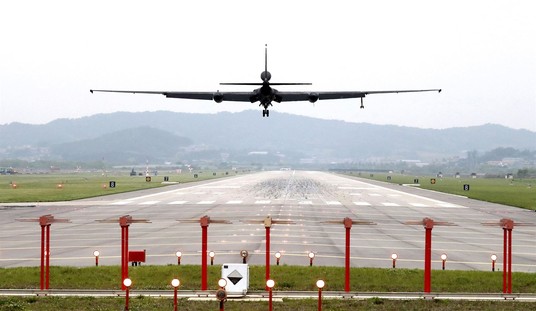Coming from the media sphere, I have something of an immunity for ridiculous personalities and clickbaity positions, but when it comes to Sean Hannity, I have zero chill. His arrogance is outrageous, even by celebrity standards, but some of the things that come out of his mouth are so daft that I cannot abide giving him even one minute of validation.
Case in point? He was interviewing Nikki Haley the evening of Oct. 25, fewer than three hours after the massacre in Lewiston, when he indulged in a soliloquy that made even the presidential hopeful look bored. And Hannity’s point? To say that his plan, should he ever find himself in an active shooter situation, is some combination of mixed martial arts (MMA) and a “belief in the Second Amendment.”
Hannity on mass shooting: What is your plan? What do you do? I have a personal security plan. I train in mixed martial arts. pic.twitter.com/Of0l1bpAGL
— Acyn (@Acyn) October 26, 2023
Hannity is like a helium-filled balloon, so full of himself that his head is in the clouds. The same could be said for several personalities, but Hannity’s problem is restraint. He cannot help but talk about himself, hoping to give everyone the impression that he is the smartest, most competent, and most relatable person alive. Narcissists are a dime a dozen, but Hannity has a loyal audience of 289,000 nighty viewers and 16.25 million radio listeners, which is a huge platform by most standards. So when he endorses a “personal protection plan” of MMA, belief in the Second Amendment, and a prayer, he’s influencing his audience to believe that is a viable option.
It’s not.
Repeat after me: Avoid. Deny. Defend.
If you’re into acronyms, remember A.D.D.
Avoid-Deny-Defend is a research-based plan of action that is proven to increase your odds of surviving a violent event. The PhDs at Texas State University’s Advanced Law Enforcement Rapid Response Training program have spent 21 years studying, analyzing, and dissecting mass shooting events for the sole purpose of developing training methods for law enforcement to better respond to one. Using their expertise, they created Avoid-Deny-Defend for non-law enforcement people (civilians, if you will) to survive such an event.
Sean Hannity wants to adopt an A.B.C. plan, or Attack, Believe, Camera. Sean Hannity has no idea what he’s talking about and his fans deserve better. Don’t listen to Sean Hannity. Listen to me: Avoid. Deny. Defend.
Avoid
Remove yourself from the situation. If you can, get out. That is your best first step. When you get to a safe place, call 911. If you have people in your care (think teachers, receptionists, medical providers), take as many of them as you can to safety. If you are on the soccer field at school during a violent event, do not go back into the building.
Deny
If you cannot leave, find a way to deny the attacker access to your location. This means closing and locking doors, barricades, straps, or wedges and using whatever means you have available to keep the shooter out of your space. Turn off the lights. Get out of sight. Make the person believe you don’t exist. Get low. Think about an adult with a firearm and the height the bullets would come in if they just shot straight into the wall.
Then, from your secure position, look around. Is there a way to leave from where you are? Can you avoid the area? If you can, go. Call 911 when it’s safe to do so.
If not, stay put and do not open the door for anyone, no matter what they say. Look around for anything you can use to defend yourself should the shooter breach your area. Consider everything from fire extinguishers to pots of hot coffee to scissors to a chair.
When the police arrive, they will have the tools and ability to make entry into the area. When they do, show them your empty hands immediately and follow their directions. Keep in mind that law enforcement’s primary objective is to stop the killing. Paramedics and other first responders cannot enter the site until the threat is neutralized, meaning if you are injured, the cops will not help you until the shooter is in custody or dead. Stop the dying is the second objective, so the most serious injuries will be tended to.
Defend
Whether you are or are not secured in an area, you have a legal right to defend yourself using whatever means necessary. Hear me: if someone is trying to kill you, do not fight fair. Go for the eyes, throat, and groin. Scratch, claw, bite, punch, kick, whatever you have to do to stop this person from taking your life. If you have to kill your attacker, kill your attacker. You deserve to survive.
A note about weapons, especially firearms: Should you choose to use a firearm during an active shooter event, make sure you know what is behind your target. If you miss the mark, where is your bullet going? Through a wall or window? Into a crowd or an open field? This is why training with your weapon under stress is crucial for life-saving success. Forensic ballistics are a two-way street, and if your ammunition is found lodged in someone’s dog or leg or if you kill someone who is not attacking you, the “self-defense” argument becomes problematic.
Avoid. Deny. Defend.
You may have heard of Run-Hide-Fight. Here are five reasons why Avoid-Deny-Defend is better:
- Try telling someone with a physical handicap to run. During one of our trainings, we had a wheelchair-bound woman confess she’d accepted the fact she would die in an active shooter situation because she couldn’t run.
- Hiding is passive. Denying is active. Make a decision and make it happen. Hiding leaves too much to the shooter and to chance, and you deserve more.
- You don’t have to take the fight to the attacker because he’s already brought it to you. You are standing your ground, not instigating. This one is more semantics than anything but it’s worth pointing out.
- This is decentralized decision-making. People who are trained in this method will not wait for directions from someone else. What’s best for the high school principal might not be best for the 3rd floor science teacher.
- Avoid-Deny-Defend goes hand-in-hand with the OODA loop. Observe the situation and Orient yourself in it to Decide what you’re going to do and then Act. Your action will change the situation, so Observe the new landscape and Orient yourself in that to Decide what you’re going to do next and then Act again. Repeat this until the event is over and/or you are removed from harm’s way.










Join the conversation as a VIP Member